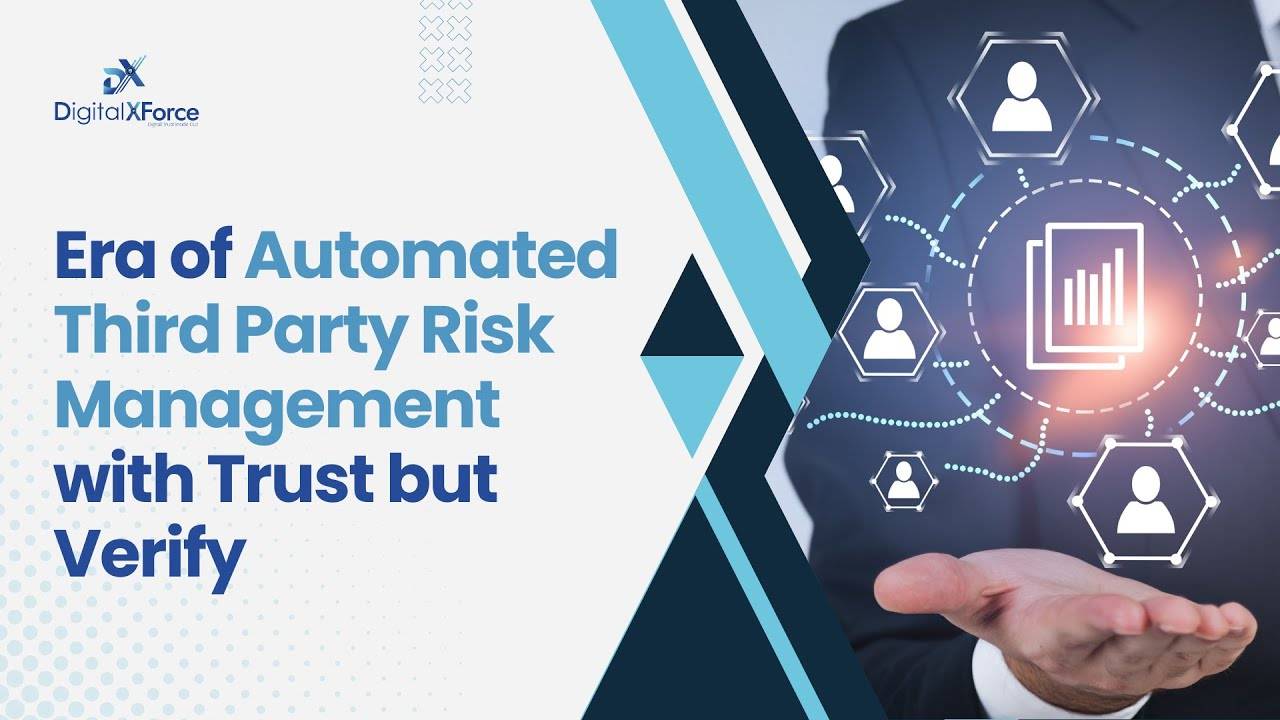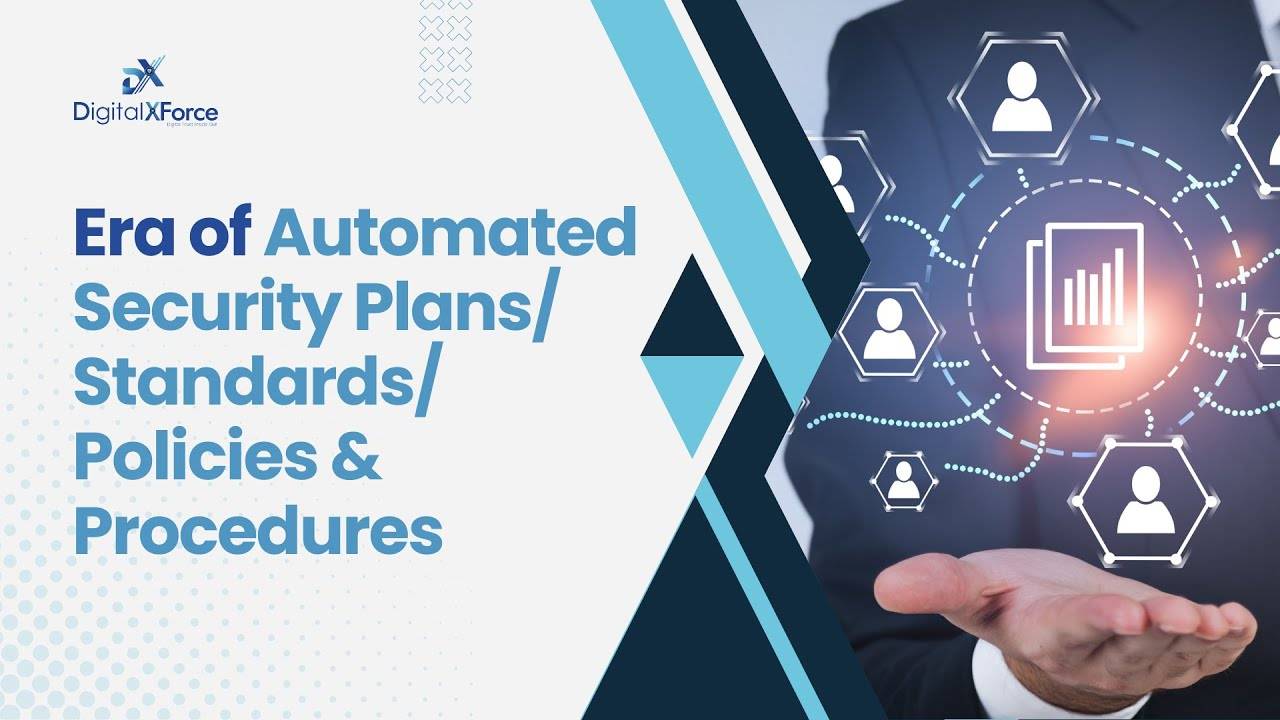In today’s digital landscape, cyber threats pose significant risks to organizations worldwide. Cybersecurity Integrated Risk Management (IRM) is a proactive approach that integrates cybersecurity into an organization’s overall risk management strategy.
This article explores the intriguing concept of cybersecurity risk management, discusses integrated risk management processes, effective cybersecurity risk management strategies, and highlights cybersecurity risk management processes and standard practices.
DigitalXForce emerges as a trusted platform for comprehensive integrated risk management solutions. So, if you’re looking to include integrated risk management solutions into your robust security strategy, we provide a holistic approach here that will help you make the right decisions for your organization.
What is Cybersecurity Integrated Risk Management?
Cybersecurity Integrated Risk Management is a holistic and coordinated approach that aligns cybersecurity efforts with the organization’s overall risk management strategy. It goes beyond conventional siloed risk assessments and aims to integrate cybersecurity into all aspects of an organization’s operations.
By combining cybersecurity practices with risk management principles, Integrated Risk Management ensures a better understanding of potential threats, vulnerabilities, and their potential impacts.
Why Cybersecurity Integrated Risk Management Matters?
A robust cybersecurity program is essential to protect organizations from cyber-attacks that can lead to financial loss, reputational damage, and legal consequences.
Cybersecurity Integrated Risk Management allows organizations to:
- Proactively Identify and Mitigate Risks: By integrating cybersecurity with overall risk management, potential threats and vulnerabilities are detected earlier on, allowing proactive measures to mitigate risks effectively.
- Streamline Security Investments: Integrated Risk Management helps organizations prioritize cybersecurity investments based on risk exposure, ensuring optimal allocation of resources for maximum protection.
- Align Security with Business Objectives: Integrating cybersecurity with risk management aligns security measures with the organization’s strategic goals, fostering a risk-aware culture throughout the company.
Integrated Risk Management vs Traditional Methods
Traditional methods of risk assessment often treat cybersecurity as a separate entity, leading to disjointed efforts and inadequate protection. Integrated Risk Management, on the other hand, considers cybersecurity as an integral component of risk management.
It takes a comprehensive approach to identify, analyze, and prioritize risks, ensuring that cybersecurity measures are tightly integrated with broader risk mitigation strategies.
The Need for Data-Driven and Outcome-Based Strategies
Data-driven and outcome-based strategies play a critical role in cybersecurity Integrated Risk Management. By leveraging data analytics, organizations gain insights into potential risks, enabling them to make informed decisions and prioritize risk mitigation efforts.
Outcome-based strategies emphasize continuous improvement, ensuring that cybersecurity measures are effective and evolve with changing threats.
Cybersecurity Integrated Risk Management Processes
Cybersecurity Integrated risk management involves a series of structured processes that enable organizations to effectively manage cyber risks:
Risk Identification: Identify and categorize potential cyber risks, including internal and external threats, data breaches, malware attacks, and other vulnerabilities.
Risk Analysis and Assessment: Assess the potential impact and likelihood of identified risks to prioritize mitigation efforts based on severity and criticality.
Risk Mitigation and Treatment: Develop and implement risk mitigation strategies, such as implementing security controls, enhancing employee training, and refining incident response plans.
Risk Monitoring: Continuously monitor and analyze cybersecurity-related data to identify emerging threats and potential gaps in the risk management strategy.
Risk Reporting and Communication: Regularly report risk status to key stakeholders and communicate the importance of cybersecurity throughout the organization.
Cyber Risk Management Strategies that Work
There are various cyber risk management strategies that work. Let’s take a look at some of the most effective strategies:
- User Awareness Training: Train employees on cybersecurity best practices, emphasizing the role they play in safeguarding company data and resources.
- Multi-Factor Authentication (MFA): Implement MFA to add an extra layer of security, making it harder for unauthorized users to gain access.
- Data Encryption: Encrypt sensitive data both at rest and in transit to protect it from unauthorized access.
- Regular Patching and Updates: Keep all software and systems up to date with the latest security patches to prevent known vulnerabilities from being exploited.
- Incident Response Planning: Develop and test an incident response plan to respond swiftly and effectively in case of a cyber incident.
Global Cybersecurity Frameworks and Standard Practices
Cybersecurity frameworks provide organizations with guidelines, best practices, and controls to establish a comprehensive cybersecurity posture. DigitalXForce supports a wide range of global compliance frameworks and standards, each designed to address specific cyber risk management needs, including:
| NIST Cybersecurity Framework (CSF) | Developed by NIST, this framework provides a structured approach to managing and reducing cybersecurity risk |
| NIST 800-53 | A publication by NIST containing security and privacy controls for federal information systems |
| ISO 27001 | An international standard for information security management systems, focusing on risk assessment and treatment |
| CMMC (Cybersecurity Maturity Model Certification) | Required for defense contractors, CMMC assesses cybersecurity maturity levels to protect sensitive defense information |
| HIPAA (Health Insurance and Portability Act of 1996) | Ensures the security and privacy of protected health information within the healthcare sector |
| GLBA (Gramm-Leach-Bliley Act) | Regulates the financial industry’s handling of sensitive customer data |
| FISMA (Federal Information Security Modernization Act) | Requires federal agencies to develop, implement, and maintain information security programs |
| FedRAMP (Federal Risk and Authorization Management Program) | Provides a standardized approach for assessing and authorizing cloud service providers for government use |
| PCI DSS (Payment Card Industry Data Security Standard) | Ensures secure handling of credit card data to protect cardholders’ information |
| GDPR (General Data Protection Regulation) | Protects the data privacy and rights of European Union citizens |
| SOC 2 (Service Organization Control 2) | Report demonstrating effective controls and security practices for service organizations |
| CCPA (California Consumer Privacy Act) | Protects California residents’ privacy rights and data |
| FFIEC (Federal Financial Institutions Examination Council) | Provides guidance for financial institutions to protect against cybersecurity threats |
| Custom/Unified Compliance Frameworks | Frameworks tailored to specific industries and organizational needs, providing a comprehensive set of controls and standards |
DigitalXForce – A Comprehensive Solution for Integrated Risk Management
In today’s dynamic cyber threat landscape, Cybersecurity Integrated Risk Management is a must for safeguarding organizations from devastating security breaches.
DigitalXForce stands at the forefront, supporting hundreds of global compliance frameworks and standards, providing tailored and comprehensive integrated risk management solutions. With DigitalXForce, you can access the necessary tools and expertise to navigate the complexities of cybersecurity and protect your digital assets with confidence.
Related Articles



